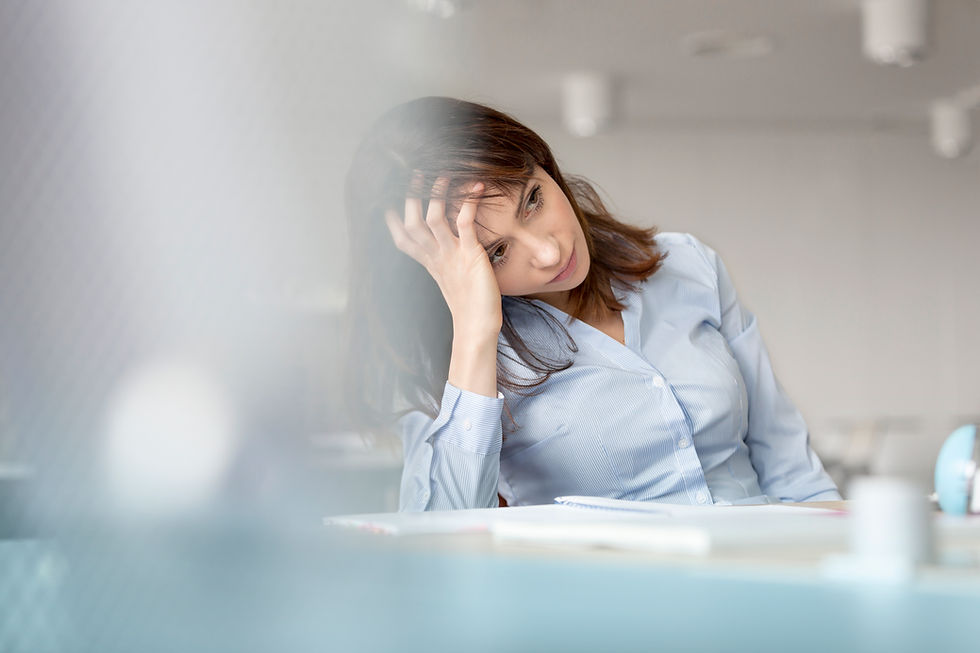Agoraphobia
- emikochibana
- Jan 7
- 3 min read
Major Symptoms of Agoraphobia
Agoraphobia is an anxiety disorder characterized by intense fear and avoidance of situations or places where escape might be difficult, or help unavailable during a panic attack or similar symptoms. It can severely impact a person’s ability to function and live a normal life.
Symptoms
For a diagnosis, the fear or avoidance must last six months or more and cause significant distress or impairment in daily functioning.
Emotional Symptoms:
Intense fear or anxiety in two or more of the following situations:
Public transportation (e.g., buses, trains).
Open spaces (e.g., parking lots, bridges).
Enclosed spaces (e.g., shops, theaters).
Standing in line or being in a crowd.
Being outside the home alone.
Fear is disproportionate to the actual danger posed by the situation.
Behavioral Symptoms:
Avoidance of feared situations or enduring them with extreme distress.
Reliance on a companion to enter feared situations.
Physical Symptoms:
Sweating, trembling, rapid heartbeat.
Dizziness or faintness.
Shortness of breath or a choking sensation.
Cognitive Symptoms:
Worry about losing control or having a panic attack in a public place.
Fear of embarrassing oneself in front of others.
Causes of Agoraphobia
Panic Disorder:
Agoraphobia often develops as a complication of panic disorder, where the individual fears situations that might trigger a panic attack.
Trauma or Stress:
Experiencing or witnessing a traumatic event, such as an accident or attack, can contribute to agoraphobia.
Biological Factors:
Dysregulation in brain areas responsible for fear processing, such as the amygdala.
Genetic predisposition to anxiety disorders.
Cognitive Factors:
Catastrophic thinking patterns, such as overestimating the likelihood of danger in public settings.
Learned Behaviors:
Avoidance reinforced by temporary relief from anxiety.
A Short Story of Struggling with Agoraphobia "Sarah’s Shrinking World"
Sarah used to love exploring her city, enjoying the bustling markets and quiet parks. But after experiencing a panic attack on a crowded subway, her world began to shrink. The memory of feeling trapped and unable to breathe haunted her.
At first, she avoided public transportation, choosing to drive instead. Then, she stopped going to busy places like malls and cinemas. Eventually, Sarah couldn’t even bring herself to walk down her street alone. “What if I have another attack and no one helps me?” she worried.
Sarah’s isolation made her feel hopeless. She missed family gatherings and turned down invitations from friends, fearing she wouldn’t be able to cope. Finally, with encouragement from her sister, Sarah sought help from a therapist, who diagnosed her with agoraphobia.
Through gradual exposure therapy, Sarah began to confront her fears, starting with small steps like standing outside her home for a few minutes. Over time, she rebuilt her confidence, finding joy in the places she once avoided. “I still get anxious,” Sarah admitted, “but I’ve learned I can handle it.”
Treatment for Agoraphobia
Therapy:
Cognitive Behavioral Therapy (CBT):
Helps challenge and change negative thought patterns.
Teaches coping strategies to manage anxiety in feared situations.
Exposure Therapy:
Gradual and controlled exposure to feared environments, starting with the least intimidating situations.
Medication:
Antidepressants:
SSRIs (e.g., sertraline, fluoxetine) to manage underlying anxiety.
Benzodiazepines:
Used short-term for immediate relief during severe episodes.
Relaxation Techniques:
Deep breathing, progressive muscle relaxation, and mindfulness to reduce physical symptoms of anxiety.
Support Systems:
Encouragement from friends and family during gradual exposure.
Joining support groups to share experiences with others facing similar challenges.
Lifestyle Changes:
Regular physical activity to reduce stress and improve overall mood.
Limiting caffeine and alcohol, which can exacerbate anxiety.
Key Takeaways
Agoraphobia is a debilitating condition, but it is treatable. Early intervention, combined with therapy, medication, and lifestyle adjustments, can help individuals reclaim their independence and improve their quality of life. Patience and perseverance are essential in overcoming this disorder.






Comments